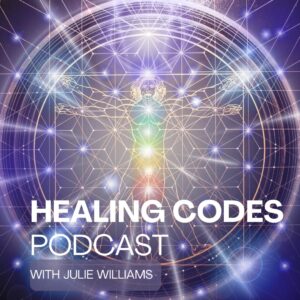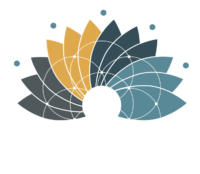
Today’s blog is the first in the Authentic Relating series where I’ll explore the key components to creating authentic relationships with yourself and others. Using NVC (Non-Violent Communication) and NLP (Neuro-Linguistic Programming) as inspiration you’ll learn how to uncover unmet needs and the associated feelings to make conscious requests from a compassionate, safe and embodied presence of being.
Key Topics Include:
- Learn to embody the key factors in authentic relationships including compassion, truth and vulnerability.
- Understand what keeps you from being able to relate authentically including past conditioning, limiting beliefs, internal triggers and unbalanced relationship dynamics.
- Nourish greater compassion for yourself with exercises and practical information to build a genuine and trusting relationship with yourself, the first step in authentic relating.
- Hear practical examples of how to apply NVC (Non-Violent Communication) and NLP (Neuro-Linguistic Programming) to create and habituate new patterns to support creating the relationships you want.
An authentic connection is a genuine connection with someone (and ourselves) where we drop the masks, we become vulnerable and compassionately share our truth. When we do this, our relationships are naturally improved as we can drop the drama and connect more deeply with our hearts where compassion, trust and truth are more accessible. Creating and maintaining heart-based connections takes safety, support and good communication skills. It takes revising old conditioned patterns from childhood, limiting beliefs and identity structures that keep us from accessing the truth of our needs, self-empowerment and self-love.
For example, if you were conditioned as a child to be a people pleaser or have co-dependent tendencies in relationships, your ability to connect authentically is limited as you are probably prioritising the needs of others before yours, saying yes to things that you aren’t aligned with, or creating unspoken expectations that will breed disappointment ultimately leading to conflict, drama and upset.
It’s important to note here that any connection outside of yourself first begins with your relationship with yourself. So, the first step in creating authentic connections with others is to nourish this within yourself first. Or simultaneously at least. A great way to get a sense of how you are connecting with yourself is to listen to your inner dialogue or how you talk to yourself within the deeper recesses of your mind. We all have some kind of inner dialogue but rarely give it the spotlight to be seen and heard. It runs in the background like static without us paying much attention to it. The louder it becomes the more we distract ourselves by keeping busy, avoiding quiet at all costs or using numbing substances like alcohol, drugs, and processed foods. While this may help in the short term, eventually we must all face our inner dialogue and the feelings it brings with it to access a healthy, happy and abundant life.
Meditation or practice involving stillness is a great way to quiet down the activity of the mind enough to hear our inner dialogue. Simply sitting quietly or even driving without music on in your car, for example, can help you to hear what and how you are communicating with yourself. Once you begin to hear your inner narrator, critic or commentator you’ll learn to foster a relationship with it to listen more closely on a more frequent basis. For example, I had a client who every time she was talking to someone inner dialogue went something like this “Wow what they are saying is so interesting, I hope I can be that interesting. OK, now it’s my turn to talk, I hope I don’t say something silly. And on like that. This is an example of an active inner critic who is judging herself and assuming that the other person is doing so as well. Maybe your inner dialogue when you are alone is reflecting on past interactions saying something like “I can’t believe they said that to me! I should have told them to shut up.” Or “I feel so lonely today, what if I am alone forever?”
Do you know what your inner dialogue is? If not, take some time to get still enough to quiet the mind and to bring this into focus to hear it more clearly. Keep compassion for yourself while doing this and release any judgment about it. Allow emotions to pass through like wind through a spider web as you do this as you simply note the content of your inner dialogue.
You can also get some insight into your inner dialogue by thinking back to things your parents spoke to you as a child. Our childhood conditioning creates our inner dialogue by internalizing our parent’s dialogue with us as our own. As we grow into adults, and not under the direct influence of our parents like we are as children, many of us keep our parent’s voices running on a loop in our mind’s eye that sets the basis for our inner dialogue. If you listen in and hear the voice of your mother, father or another authority figure, that isn’t serving to keep you empowered and connected to the true essence of who you are, feel free to release those voices now. Take the lessons learned from that internalized parental dialogue knowing that no matter the content, the true intention behind those words (however misguided they may have been) was love, support and protection. Hear the words from the higher self of your parents, their divine soul aspects with them free from story, personality and pain. Allow the love, support and protection of their words to be received by your higher soul self. Creating a connection from the heart of your parents (free from their individual story) to your heart. Drop into your heart as you begin to clear the remnants of emotional projections that once limited your ability to speak kindly and compassionately to yourself.
As you do this connect with your inner best friend. The aspect with you that loves you unconditionally, who supports you in all you do and reminds you when needed that you are always in the right place doing the right thing at the right time. Your inner advocate who celebrates your achievements and hugs you when you feel low. Listen to what this inner best friend has to say as you replace the old voices of your inner dialogue with this new positive, empowered, loving, confident voice of your inner best friend who is there to celebrate you and give you guidance whenever you need it. All you have to do is get still, quiet and listen from your heart. This will help you learn to speak kindly to yourself with support, love, compassion and gratitude for this gift of life you are living.
Now that you have the skills to nourish a compassionate connection with yourself, the next step is to allow yourself to be vulnerable by connecting in with your needs. When there is conflict between people (or within yourself) it is a sign that there are needs that are not being met that are causing emotional responses that prevent us from being able to communicate with kindness, empathy and vulnerability. Instead, we get caught in a cycle of blame, judgement and criticism that derail the ability to connect authentically.
A great resource to help this process is the work of Marshall Rosenburg who wrote NVC: Non-Violent Communication A Language of Life, Life-Changing Tools for Healthy Relationships. His NVC process involves being able to observe the experience from a non-judgmental compassionate place, identify the emotions associated with the situation, uncover the unmet need associated with that emotion and be able to formulate a specific request that enriches life for everyone involved. The basic formula goes like this. When you do X, it makes me feel Y. My need is for A and my request is B. When you don’t call me on our scheduled day, I feel disappointed and sad. I would like for you to be able to show up at our planned time as I enjoy our time together listening, sharing and laughing. Is that something you can agree to?
Rosenburg’s work is a great way to reduce conflict by staying compassionate, staying focused on our own feelings and needs rather than projecting them onto others through blame and criticism and then formulating a specific request that allows the other person to receive it with compassion eliminating the drama of becoming defensive, angry or shutting down. I’ll put the information on where to get this book in the episode details. It is a great book to read on your own, together with a partner or with your family to help build the knowledge and skills needed to communicate with greater peace and effectiveness which is one of the most important factors for authentic connections.
I’ve used Rosenburg’s tools for many years and it is also required reading for all of my students. I also use NLP (Neuro-Linguistic Programming) together with NVC as I find it adds another dimension to authentic communication that supercharges both practices. While NVC gives us the formula for authentic, vulnerable and trusting connection, NLP allows us to understand at a deeper level the reasons why we are not able to access true genuine connection and gives us the skills to revise our conditioned patterning to be able to access our inner truth based on emotional responses and unmet needs.
For example, when we have a heightened emotional response, this usually indicates we have been triggered by something from our past, usually from childhood. In the NVC process of being able to identify the feelings that will lead us to understand our needs, if we are triggered, we will become overwhelmed by these feelings making us unresourceful and unable to stay connected with our present-day self. This makes it impossible to be able to continue with the NVC process of identifying needs and making compassionate requests. Instead, part of us regresses to the age where the trigger originates, sending us back into the past on our timeline losing connection to the present moment where truth lies. We then act out of these heightened emotions rather than being able to stay calm, compassionate and centred in the heart to formulate a request based on our needs. The result is usually drama, conflict, fighting and exasperation.
NLP allows to be able to identify our triggers such that we can see them coming and have the skills to make different choices so that our emotions stay at a 3 out of 10 rather than escalating in a nanosecond to a 10 out of 10. It is a process like this parable I’m paraphrasing from Portia Nelson’s poem:
I walk down the street, I fall into the hole.
I walk down the street, I see the hole, I fall into the hole.
I walk down the street, I see the hole, I walk around the hole.
I walk down a different street.
This is descriptive of the journey of releasing the hold old triggers have on us and taking back our personal power and choice to be able to avoid and eliminate triggers that derail us from staying connected with our authentic selves and connecting from that place.
When we are aware of our own triggers, the hole in the parable above, we will fall into them without realizing it. Our job then becomes to use the skills we have to get ourselves out of the hole which includes seeking the help of a skilled therapist to unwire these triggers. We then will see the trigger, but not have the strengthen our choices to stop the habituated neural net pathways from firing in our brain and even though we have seen the hole we still fall in. The good news is that the mere act of observing it before falling in begins to disrupt our habituated brain chemistry that supports the old conditioning. This allows us to be able to begin to build new neural net pathways to see the hole and make a conscious choice to walk around the hole, acknowledging the trigger but being able to make a choice that results in a different outcome. This strengthens the new neural net pathways creating a new habituated way of being that allows us to create a different experience in life and be able to choose to walk down a different street.
This is the secret sauce behind NLP, which is that it builds lasting change by creating and habituating new brain chemistry to support to create the experience in life we want.
One way to help lessen the effect of becoming triggered and overwhelmed with old emotions is to keep yourself located in the present through sensory-based observations. Take a breath and connect with your senses to observe what you are seeing in this moment, notice what you are hearing, pick up and scents you are smelling and connect with your body to notice any physical sensations you may be feeling. This will help to loosen the hold the past has on you to locate you in the present moment which helps reduce emotional triggers.
Staying connected to what you observe also allows for being able to communicate your requests using the NVC process. For example, it is the difference between saying “You don’t care about me because you don’t call me” to the sensory-based observation of “You missed our weekly call yesterday that we agreed to last week. This makes me feel confused and sad. I enjoy speaking every week. I. know you are busy, but is it possible for you to schedule and show up for weekly phone calls with me?”
Can you hear the difference between those two statements? One is a judgement and projection using vague languaging coming from a triggered place of feeling unloveable. The second is a specific observation of an action stated in a fact-based way where one is taking responsibility for their feelings. This allows for the need to be clearly identified and a request to be made from a compassionate place that allows the other person to agree or communicate their needs to negotiate a win-win solution from a drama-free place.
Communication is one of the best tools we have to facilitate authentic connections and I hope this episode has helped give you information and skills to begin to get in touch with this. Stay tuned for next week’s blog where we will continue to build skills for authentic connections.
_____________
Find out more about Consciousness Medicine.
Upcoming courses, workshops and 1:1 sessions.
Sign up for my free e-newsletter from the homepage www.consciousness-medicine.com.
Stay Connected on Social Media:
Facebook: www.facebook.com/CentreforConsciousnessMedicine
Instagram: www.instagram.com/wellnesswisdomwithjulie
Linked In: www.linkedin.com/in/julie-williams-cxmed


